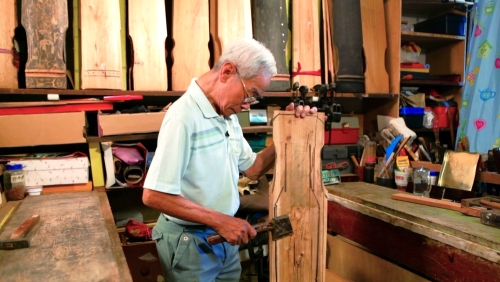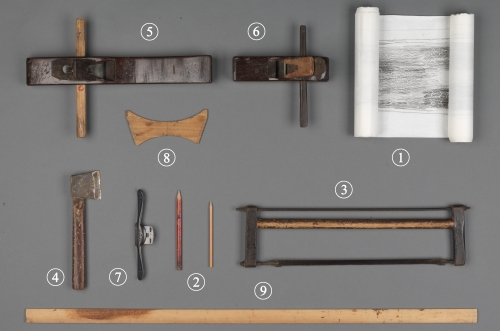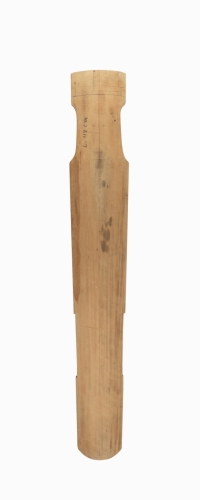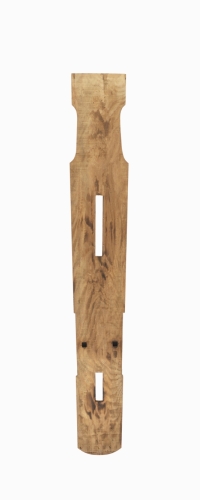-
History & Society
- Education in Pre-war Hong Kong
- History of Taikoo Sugar Refinery
- Hong Kong Products Exhibition
- Local Festivals Around the Year
- Post-war Industries
- Pre-war Industry
- The Hong Kong Jockey Club Archives
- Tin Hau Festival
- Memories We Share: Hong Kong in the 1960s and 1970s
- History in Miniature: The 150th Anniversary of Stamp Issuance in Hong Kong
- A Partnership with the People: KAAA and Post-war Agricultural Hong Kong
- The Oral Legacies (I) - Intangible Cultural Heritage of Hong Kong
- Hong Kong Currency
- Hong Kong, Benevolent City: Tung Wah and the Growth of Chinese Communities
- The Oral Legacies Series II: the Representative List of the Intangible Cultural Heritage of Hong Kong
- Braving the Storm: Hong Kong under Japanese Occupation
- A Century of Fashion: Hong Kong Cheongsam Story
Geography & EnvironmentArt & Culture- Calendar Posters of Kwan Wai-nung
- Festival of Hong Kong
- Ho Sau: Poetic Photography of Daily Life
- Hong Kong Cemetery
- Sketches by Kong Kai-ming
- The Culture of Bamboo Scaffolding
- The Legend of Silk and Wood: A Hong Kong Qin Story
- Journeys of Leung Ping Kwan
- From Soya Bean Milk To Pu'er Tea
- Applauding Hong Kong Pop Legend: Roman Tam
- 他 FASHION 傳奇 EDDIE LAU 她 IMAGE 百變 劉培基
- A Eulogy of Hong Kong Landscape in Painting: The Art of Huang Bore
- Imprint of the Heart: Artistic Journey of Huang Xinbo
- Porcelain and Painting
- A Voice for the Ages, a Master of his Art – A Tribute to Lam Kar Sing
- Memories of Renowned Lyricist: Richard Lam Chun Keung's Manuscripts
- Seal Carving in Lingnan
- Literary Giant - Jin Yong and Louis Cha
-
History & SocietyGeography & EnvironmentArt & Culture
-
View Oral History RecordsFeatured StoriesAbout Hong Kong Voices
-
Hong Kong MemoryThe Legend of Silk and Wood: A Hong Kong Qin StoryRecently Visited
Chopping
-
Step 2: Chopping
Qins come in a myriad of styles. In the second step of the qin making process, the design of the qin is drawn onto the wood. The process usually begins with a proposed scheme of measurements for each part, from which paper patterns are drawn. These patterns are next copied onto the wood. To condition and scoop the top and bottom boards into a qin body, the maker must first saw out the qin shape. An axe is next used to chop out the basic shape of the qin, followed by the long plane, which is used to trim and condition the qin top. Using the curve measure as a guide for precision, used for detailed shaping. The qin bottom must be straight along the middle axis. A small curve should be trimmed across the sides.
-
Step 2: Chopping
Tools
- Paper pattern – drawn to the same scale as the qin, to be copied onto the wood
- Pencils – for outlining the qin shape on the top board and bottom board according to the patterns
- Hand saw – for sawing out the top board and bottom board as required by the qin style
- Axe – for chopping out the basic shape and curve of the qin top
- Long plane – for smoothing out the qin top and bottom. The longer the plane is, the flatter and smoother the wood.
- Short plane – for refining the qin top and bottom
- Spokeshave – for creating a rounded edge, e.g. refining the qin forehead
- Curve measure – the standard of the curvature of the qin top
- Long ruler – the standard of the straightness of the qin top
Copyright © 2012 Hong Kong Memory. All rights reserved. -









